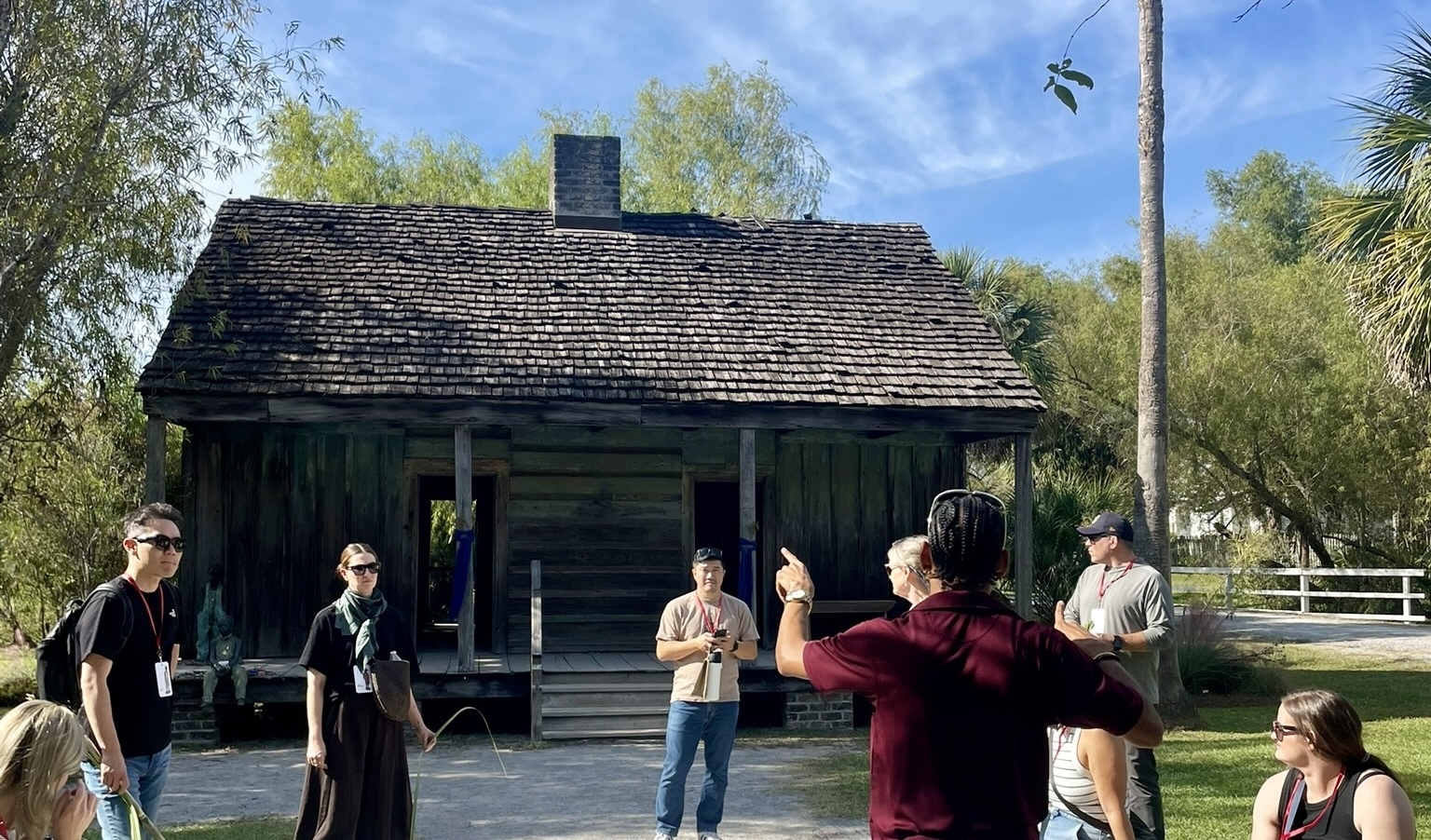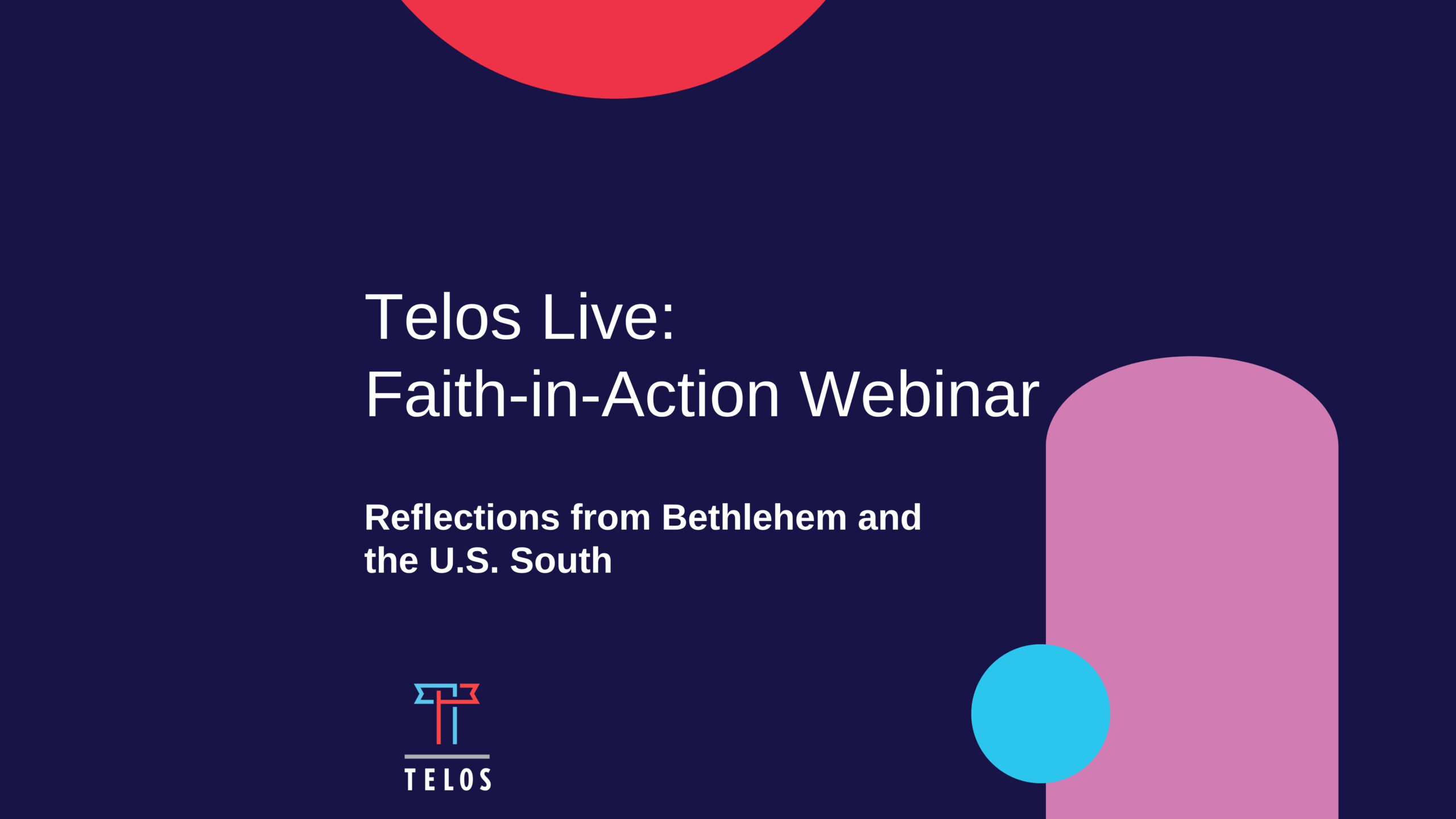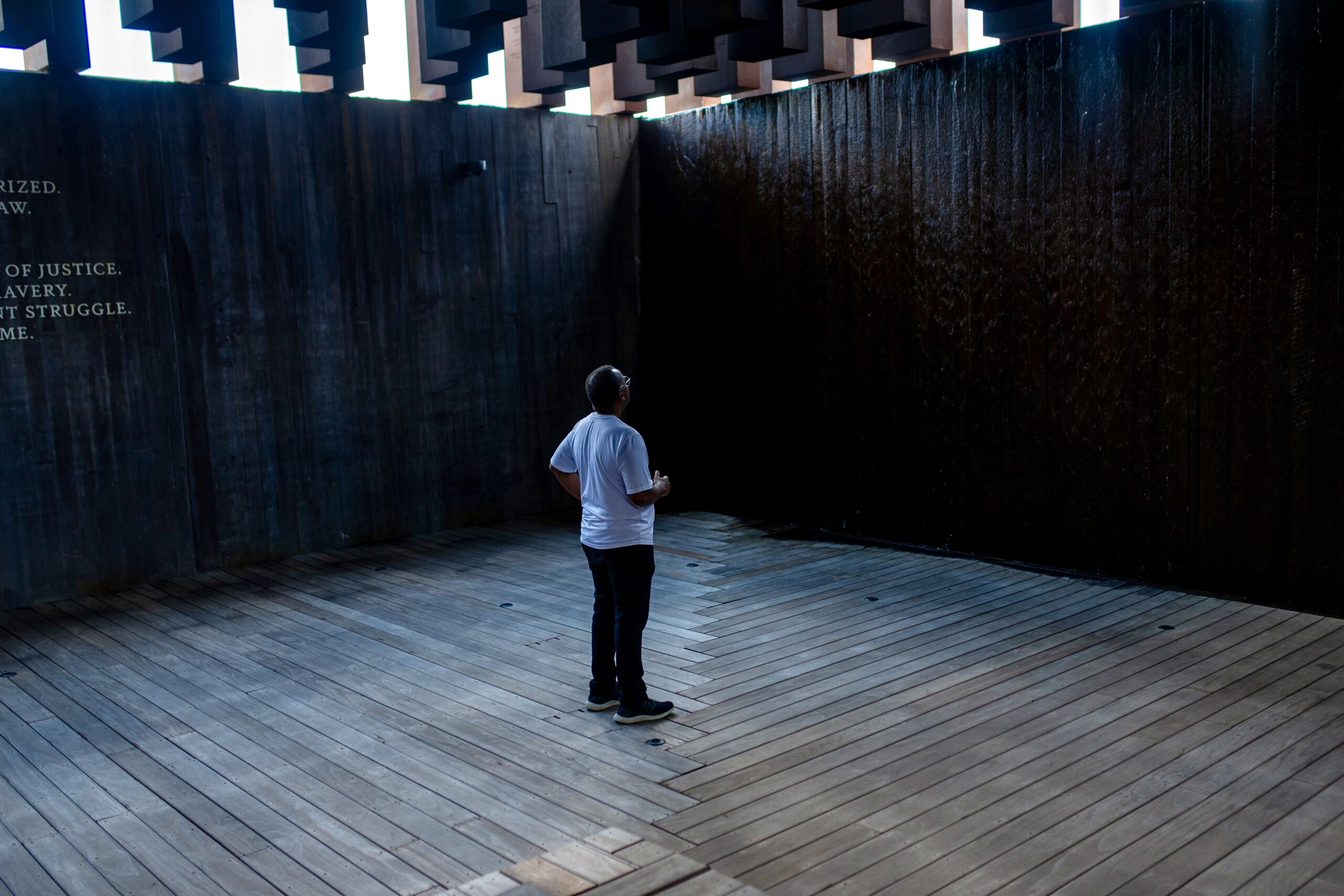I, like so many others who have lived, loved, worked in (or even just visited) the Holy Land, have spent the last eight months in a sort of liminal space. Our ‘ordinary’ lives have continued on as normal, but with a sickening awareness of what our friends and colleagues are enduring a thousand miles away. Our Instagram feeds intersperse vacation pics and cat videos with horrific images of hostages being taken from their homes, of Gazan children crushed beneath the weight of theirs. Our Whatsapp chats are updates on settler violence, prayer requests, attempts at safe spaces for our friends to vent, and the simple phrase “there are no words.” Before coming to intern with Telos I had spent quite a bit of time living and studying in Israel/Palestine, first with an undergraduate study abroad exchange and later as a master’s student. I fell in love with the radical complexity that is the city of Jerusalem as I formed not only deep personal friendships but also enduring relationships with various peacebuilding projects such as the Tent of Nations farm. In these alleys and farmlands, I found people living out the pursuits of peace, justice, and mercy that I had longed to find in my home countries. I felt alive in a culture where people were willing to talk in-depth about anything and everything, even if (especially if) we disagreed. I’ve desperately missed the community I made there and have returned every chance I get. Recently, I got the chance to return for the first time since October 7th for this year’s Christ at the Checkpoint conference, hosted by the Bethlehem Bible College.
It’s hard to describe in words the feeling of being dropped into a society at war. The last time I was in Israel/Palestine was a month before October 7th, for a friend’s wedding. Even then I felt strangely unsettled and on edge. Over dinner, my mentor confirmed these sensations: “I don’t know when or how, but something is going to happen,” she told me. She and others who expressed similar sentiments surprised me, as I’d always been struck by how people in Israel/Palestine didn’t flinch at loud noises or look twice when columns of black smoke drifted across the sky at the university (trash and tire burning is a common occurrence along the “border fence” visible from the Hebrew University). Of course, neither of us could have predicted the horror about to be unleashed upon the land.
At first glance, everything was striking in its normality. Ben Gurion airport was a familiar organized chaos. The local haunts on Jerusalem’s Ben Yehuda Street still overflowed with families dining out on kosher pizza and ice cream. The light rail still chimed its way up and down Jaffa Street. And yet, even as shopping bags and toddlers weighed down arms, people’s eyes were always scanning, looking for the nearest escape or exit routes should “something” happen. (“Something” being the euphemism for terror attacks or rocket sirens.) Posters of the hostages were plastered to nearly every inch of spare space. Most people wore either a yellow ribbon or a dog tag engraved with “Bring Them Home.” For the first time, I wasn’t the only one who nearly leapt out of my seat when a cafe waiter dropped a tray. Guns, which beforehand were already a frequent sight across the backs of baby-faced IDF recruits, were now absolutely everywhere: leaned against a chair at a restaurant, pressed into my arm on a crowded bus, or slung over the shoulders of both soldiers and civilians of every age.
Crossing over the border fence every morning into Bethlehem used to take a thirty-minute bus ride from the center of Jerusalem. It now took over an hour—and as many as three hours if I were heading for the farmlands outside the city. The infamous Checkpoint 300 was now even more unreliable than before, and I had to take a bus in a winding arch around the Jerusalem neighborhood settlement of Gilo. As I had lived in Israel-Palestine during the tail end of the coronavirus pandemic, I wasn’t as struck by the emptiness of Bethlehem’s streets as others who arrived for the Christ at the Checkpoint conference; what did come as a surprise was the almost physical weight that settled heavier on my shoulders the longer I spent in town. Where Jerusalem’s streets had induced a nervous awareness, Bethlehem seemed to be squeezing my chest with its burdens. The hardships of the occupation have always been acute in Bethlehem, where a border wall cuts an aggressive partition through its heart. But this moment’s sense of desperation and anxiety was so intense, it made it hard for me to focus. It made me want to run for the hills.
In the frustration and tears shed by Palestinians and Israelis both, I am reminded of Jesus in Matthew 23, when He wept over Jerusalem. The biblical account hints that He saw the coming desolation of His beloved city. He saw the way the cycle of violence both from the Roman occupation and Jewish uprisings of His day was already tearing His homeland apart. It was the same pattern of violence we see in the land now—a cycle so many in Israel/Palestine know and have been telling us brings forth only more destruction.
Let me be crystal clear: I am in no way comparing my feelings of weight to the compounding trauma of those who have spent their lives in the shadow of a worsening military occupation. Psychological experts have had to invent a new term to describe the ongoing mental exhaustion and deeply rooted traumas faced by Palestinian children in the West Bank and Gaza today: continuous traumatic stress disorder (1). Israeli children as well are suffering deep psychological wounds after spending months constantly sheltering from missiles and being inundated with graphic stories of the atrocities of October 7th. And all this is not to mention the histories of generational traumas present in the families of both Palestinians and Israeli Jews. Whatever peace plan may come from this will have to be interwoven with a trauma-informed understanding of both peoples; not caring about the trauma of violence, occupation, and marginalization is what led us to this current moment. Opening pathways to healing will be a vital part of any plan that seeks a just peace.
That being said, facing these traumas in such a visceral way upended any ideas I may have held about the nature of hope. “Hope” is no longer a few nice words and a pat on the shoulder. What is there to say about “hope” when the shopkeeper who kept your dorm room decorated with Holy Land trinkets shows you his new baby girl’s photo with tears in his eyes? When he explains she may be the last family member in seven centuries to be born in Jerusalem, because they simply cannot continue to survive on their wildly fluctuating income? What is there to say when your friend nearly gives birth in a bomb shelter? When the family that hosted you for Shabbat dinner sends their youngest son back to an army that doesn’t let him sleep for three days straight? When the Bethlehem man who helped you find the perfect tatreez tablecloth says he’s taken three loans to feed his family? When a former roommate sits alone on the roof of her house, filming, as Iranian missiles fill the sky? When settlers hold another friend at gunpoint for hours on the land that once brought you so much healing? When entire nations cry out for their pain to be seen, for their stories to be heard while the world decides which of these stories are more worthy of attention at the cost of the other? There are no words to offer, so I learned the power of simply being. Being willing to bear the weight of the stories that threaten to crush us. Being with those going through unfathomable pain, just to show them they are neither forgotten nor forsaken. “Hope” now looks like embodying this pain and moving with it into action for the future.
As I heard over and over again, especially in spaces such as Christ at the Checkpoint, we do not have the luxury of falling into despair. When despair is a luxury, life itself becomes a resistance to the status quo of hardship. Hope becomes a prayer, an imagination for a different world. Dr. Lamma Mansour powerfully declares that “hope gives us the power to persevere and persist. Hope gives us the power to imagine…because if we don’t imagine, others will do the imagining for us.” I saw this holy imagination for a better future breaking through the darkness across the Holy Land. On a West Bank hilltop, Daher Nassar continues to lift his favorite hymns to heaven as he stewards his farmlands for harvest. People take to Jerusalem’s streets after every Shabbat sunset in holy rage for their peoples’ safe return. My former roommate sits in checkpoint traffic every day to get to work in defiance of an army that would rather she stay confined to a smaller and smaller enclave. Groups of Israelis and Palestinians together put their bodies on the line to protect aid headed for Gaza. And people from across the world converge on a tiny Bethlehem college to declare that we do not accept things as they are.
On this land that I believe God Themself chose to walk, I imagine, and I have seen, a land that rumbles with life, and life abundant. I believe someday we will see Israeli and Palestinian children freely walk this land of their ancestors in wonder, searching the stones and learning the stories that have shaped our world in order to pass them on to those of us privileged enough to visit. Teachers of faith will use our sacred wisdoms to bring humanity into an era of deep humility and restoration, while the landscapes traversed by our patriarchs and matriarchs will bring forth scientific advancements beyond our wildest dreams. The bulldozers once used on Palestinian homes will tear down the separation barrier; pieces will be sold as souvenirs and placed in museums around the world. Weapons used to destroy the imago Dei will be bent into tools for the gardens spoken of by the prophets. We will see a world where hostages come home, cities rise from ashes, and people shake off the shackles of hegemony and nationalism in pursuit of a flourishing worthy of the psalmist’s pen.
In the same verses of Matthew 23 in which Jesus wept over Jerusalem’s coming destruction, He also alluded to Psalm 118’s song of victory. In this psalm, the righteous are welcomed through the gates of Jerusalem into the presence of God during a festival of abundance. After the horrors of destruction, we will be shown a new day that is made for celebrating.
The first step to seeing any of this come to fruition in the Holy Land is a lasting permanent ceasefire. Trauma cannot begin to heal if it is still ongoing. People need to be able to see a way forward if they are to begin the work of prophetic imagination. If we are to join in this journey of a better future for the people of Israel/Palestine we need to be willing to come alongside those already doing the long slow work of peacemaking. We need a way forward that shakes off the dualistic thinking that claims one people can flourish at the cost of the other. We need systemic change that offers the people of Israel/Palestine a path towards lasting justice and peace (2). Most importantly this path needs to come from Israelis and Palestinians who spend their lives pursuing the work of justice and peace. To move towards a world of flourishing we must see each Palestinian and each Israeli as human beings worthy of life, honor, and protection.
Coming back again to Lamma Mansour’s wonderful CATC talk, I am also now convinced that for those seeking a way forward through peacemaking and nonviolence, we need to be as organized as those who seek a path through force or brute power. Singer and activist Joan Baez once said that nonviolence is organized love. So weep, rage, ask the heavens why such suffering is allowed. Do what you need to do to feel the depths of what Love asks of us at this moment in history. Resist the trap of despair to join these resilient Israeli and Palestinian peacemakers in bringing about hope in the places we are told it cannot be found. Hope is still out there waiting to be found. We need only to answer its call.
—
1. Farajallah, Iman. Continuous Traumatic Stress in Palestine: The Psychological Effects of the Occupation and Chronic Warfare on Palestinian Children. World Social Psychiatry 4(2):p 112-120, May–Aug 2022. | DOI: 10.4103/wsp.wsp_26_22
2. Some Israeli/Palestinian led organizations offering viable peace plans and creative peacemaking initiatives include: Two States One Homeland. Standing Together, Bethlehem Bible College, This is Not an Ulpan, Zochrot, Tent of Magazine, Wi’am, Combatants for Peace, Parents Circle–Families Forum and the New Israel Fund.
A very short list of peacemakers and activists showing us a new way forward: Hamze Awade, Maoz and Magen Inon, Rev. Munther Isaac, Daoud Nassar, Rabbi Arik Ascherman, Basel Adra, Abby Stein, Rula Daood, Alon-Lee Green, and Noam Shuster-Eliassi.


